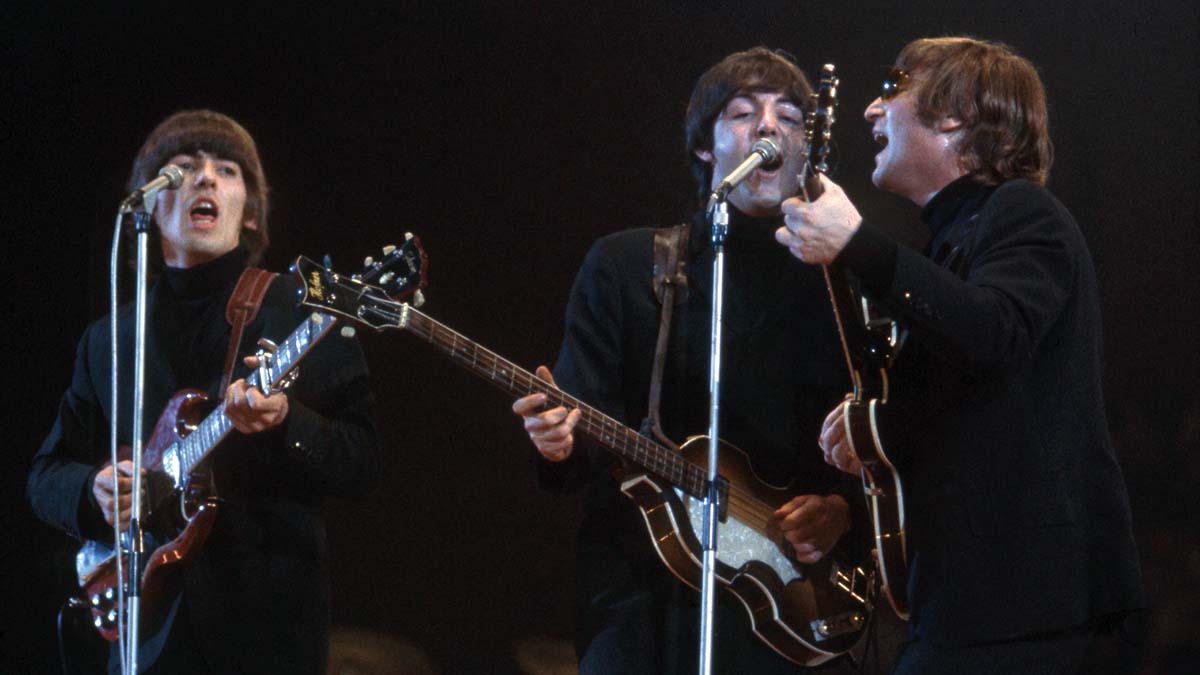The secrets behind George Harrison's guitar tone on The Beatles' Hey Bulldog
Recorded on the hop, the track was notable for Harrison being sole guitarist

No other band has been examined under a microscope as meticulously as the Beatles. Detailed books have even been written focusing solely on the instruments they played and the gear used to make their recordings in the studio.
But with all this exhaustive research, some details are still unknown. For example, historians may know what instruments were brought to and available for each recording session, but the exact guitars and amps used on many songs still remain purely the subject of speculation.
Although many photos were taken of the Beatles working in the studio, only one video exists of them at work while recording.
On February 11, 1968, the Beatles showed up at Abbey Road Studio Three to shoot footage for a promotional film for Lady Madonna. To make the best use of their time, they decided to record Hey Bulldog while the cameras rolled. As a result, the footage provides a definitive record of the instruments used.
Hey Bulldog is also unique in that George Harrison was the sole guitar player on the song, with John Lennon recording the piano backing and Paul McCartney playing bass.
GUITAR: 1964 Gibson SG Standard (bridge pickup), Volume: 10, Tone: 10
AMPS: Vox Conqueror (Brilliant chan-nel, Volume: 5 rhythm/8 solo, Bass: 3, Treble: 5 rhythm/9 solo, MRB: On, Reverb Channel: Off , Reverb Blend: 0, MRB Effects switch: 3, Distortion: 8) with Vox Conqueror 2x12 cabinet with Celestion G12 Alnico silver speakers
EFFECTS: None
STRINGS/TUNING: Unknown, probably Gibson Sonomatic 340 .012-.056/Standard
PICK: Unknown, probably Medium teardrop (Fender 351 shape) celluloid
Harrison used a very straightforward rig consisting of his 1964 Gibson SG Standard and a Vox Conqueror solid-state amp with 2x12 cabinet, the latter identifiable in the 1999 Hey Bulldog video around 2:30, where its glowing red power indicator in the amp head’s upper right corner is clearly visible.
The Conqueror’s built-in fuzz, which utilizes germanium transistors in a circuit similar to a Sola Sound/Vox Tone Bender pedal, provided the extra-gritty distortion heard on the 20-second solo and overdub that doubles the piano/bass/guitar unison riff.
All the latest guitar news, interviews, lessons, reviews, deals and more, direct to your inbox!
The fuzz signal is in parallel with the amp’s clean tone, with the Distortion knob adjusting the blend of the fuzz as it’s added to the clean signal. To my ears, it sounds like Harrison is using a pick throughout the entire song, but some of the video footage shows him plucking the riff with his bare thumb.
Hey Bulldog initially received a lukewarm reception when it first appeared on the Yellow Submarine soundtrack, but it has earned respect in recent years for its raw, stripped-down production, manic energy and irresistible riff.
Get the sound, cheap!


TONE TIP: Use the Katana’s “Clean” amp type and select the 60s Fuzz from Boss Tone Central software for the Booster section. Set the Direct Mix control on the Tone Central software to about 40-50 to emulate the Vox Conqueror’s fuzz/clean blend.
Chris is the co-author of Eruption - Conversations with Eddie Van Halen. He is a 40-year music industry veteran who started at Boardwalk Entertainment (Joan Jett, Night Ranger) and Roland US before becoming a guitar journalist in 1991. He has interviewed more than 600 artists, written more than 1,400 product reviews and contributed to Jeff Beck’s Beck 01: Hot Rods and Rock & Roll and Eric Clapton’s Six String Stories.

